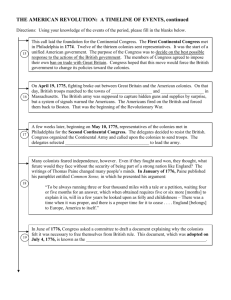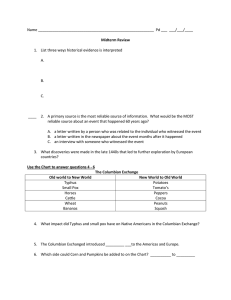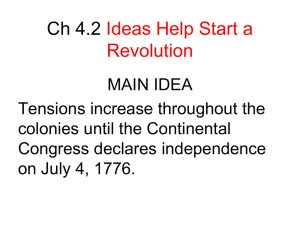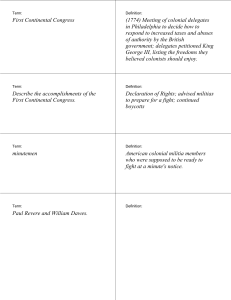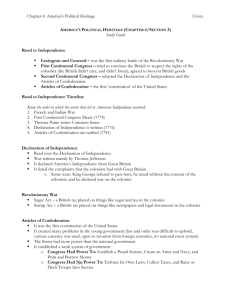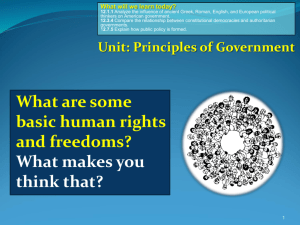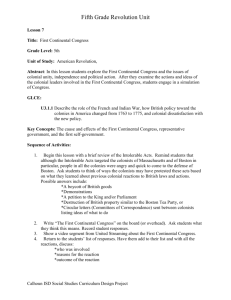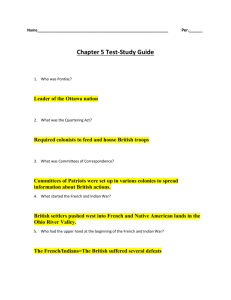Origins of American Government
advertisement
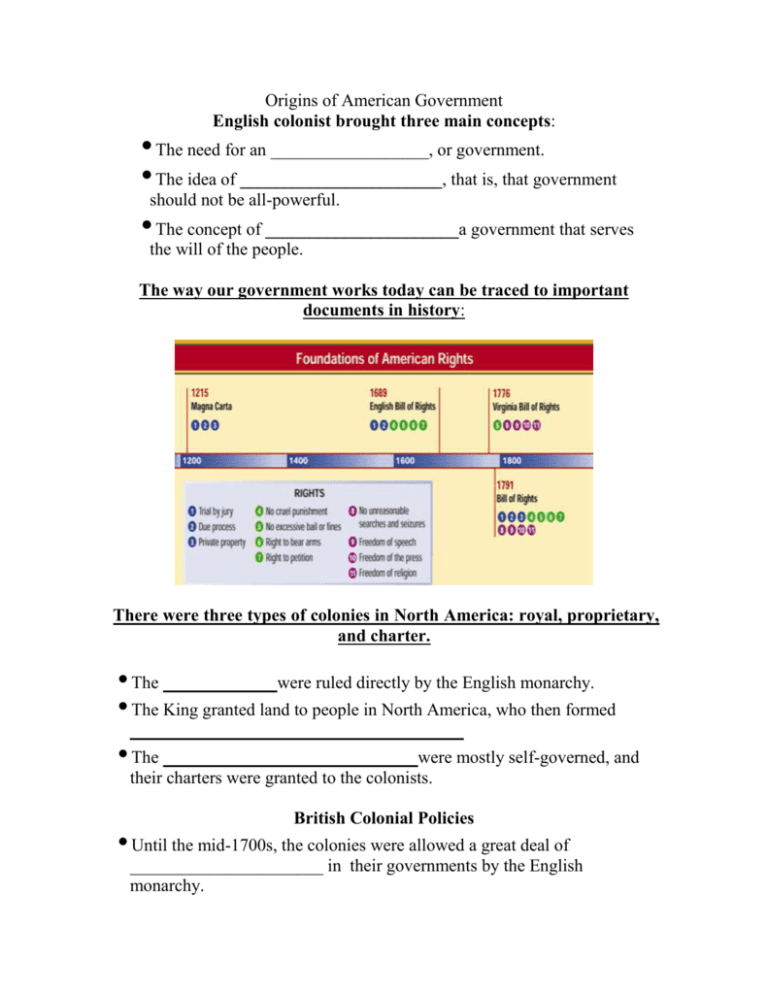
Origins of American Government English colonist brought three main concepts: •The need for an __________________, or government. •The idea of _______________________, that is, that government should not be all-powerful. •The concept of ______________________a government that serves the will of the people. The way our government works today can be traced to important documents in history: There were three types of colonies in North America: royal, proprietary, and charter. •The _____________were ruled directly by the English monarchy. •The King granted land to people in North America, who then formed ______________________________________ •The _____________________________were mostly self-governed, and their charters were granted to the colonists. British Colonial Policies •Until the mid-1700s, the colonies were allowed a great deal of ______________________ in their governments by the English monarchy. •In 1760, _____________________ imposed new taxes and laws on the colonists. •The colonists started a __________________________, proposed an annual congress, and began to rebel. Growing Colonial Unity Early Attempts •In 1643, several New England settlements formed the New England Confederation. •A confederation is a joining of several groups for a common purpose. Growing Colonial Unity The Albany Plan •In 1754, Benjamin Franklin proposed the _________________________, in which an annual congress of ______________________ (representatives) from each of the 13 colonies would be formed. Growing Colonial Unity The Stamp Act Congress •In 1765, a group of colonies sent delegates to the Congress in New York. ____________________________________________________ •These delegates prepared the ___________________________________ against British policies and sent it to the king. The Continental Congresses First Continental Congress •The colonists sent a _________________________________ to King George III. •The delegates urged each of the colonies to refuse all trade with England until British tax and trade regulations were _______________, or recalled. The Continental Congresses Second Continental Congress •In 1775, each of the 13 colonies sent representatives to this gathering in _______________________________________ •The Second Continental Congress served as the ____________________ of the United States from 1776 to 1781. American Independence •On July 4, 1776, the Second Continental Congress adopted the ___________________________________________________________ •Between 1776 and 1777, most of the States adopted ________________ instead of charters. Common Features of State Constitutions ___________________________ The principle of popular sovereignty was the basis for every new State constitution. That principle says that government can exist and function only with the consent of the governed. The people hold power and the people are sovereign. ___________________________ The concept of limited government was a major feature of each State constitution. The powers delegated to government were granted reluctantly and hedged with many restrictions. _________________________ ________________________ In every State it was made clear that the sovereign people held certain rights that the government must respect at all times. Seven of the new constitutions contained a bill of rights, setting out the “unalienable rights” held by the people. The powers granted to the new State governments were purposely divided among three branches: executive, legislative, and judicial. Each branch was given powers with which to check (restrain the actions of) the other branches of the government.


